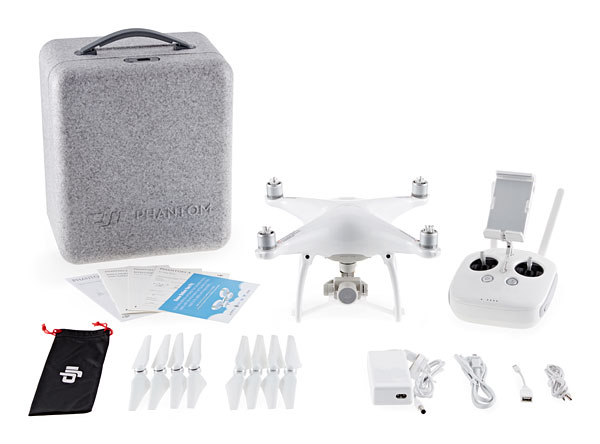DJI Phantom 4 is a faster-moving, obstacle-avoiding, smarter-than-ever flying camera
posted Thursday, March 3, 2016 at 9:11 AM EDT
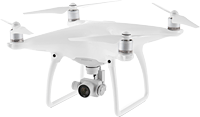
Aerial photography fans, your new object of desire is here! Shenzhen, China-based DJI, the 800-pound gorilla of the consumer drone market, has just taken the wraps off its latest-generation Phantom-series quadcopter, and on paper at least it looks to be a pretty spectacular upgrade! Key changes include faster and more stable flight, better battery life, automatic collision avoidance and an updated lens and gimbal that should make it an even better aerial photography platform than ever.
A brand-new body hosts plenty of improvements
The Phantom series first launched back in 2013, and until now every model in the line has shared a very similar body design. That changes with the DJI Phantom 4, and the company has even foregone its instantly-recognizable all-white color scheme to reinforce that point. The Phantom 4 is still predominantly white, but a mere glance at its body tells you it's brand-new. It has a curvier, more bulbous look, and on its base is a new gray panel that disrupts the monotone aesthetic of earlier models. Up top, the propellers are now mounted higher to help keep them out of the way of the bottom-mounted, gimbal-stabilized camera.
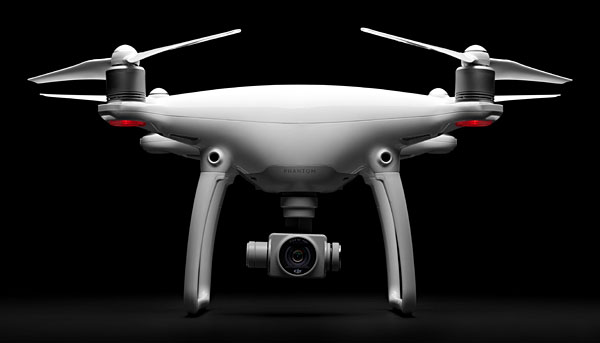
Fly even faster and for longer than before
On the inside, things are even more different. There's a new magnesium core structure aimed at increasing rigidity while keeping weight gain to a minimum. DJI seems to have achieved that pretty well, because the new model weighs just 100g (8%) more than the Phantom 3 Professional and Advanced, the most closely-related models from the previous generation. And you needn't worry about flight time, because that too has actually increased to a manufacturer-claimed 28 minutes, a full five minutes (22%) more than the previous generation.
That's doubly impressive because the maximum flight speed has also increased significantly to around 45 miles per hour, an improvement of about 9mph (25%) over the previous generation. This improvement was achieved in part thanks to new, more powerful flight motors. They're also said to be more efficient, something we'll come back to in a moment. The Phantom 4 also sports newly-designed propellers on each motor. Each of these composite props now mounts with a push and twist, rather than having to be spun down into position as in earlier models.
Understanding that some users might find that extra speed to be undesirable or perhaps even intimidating -- the faster you fly, the more quickly things can go wrong -- it has been made an optional feature accessed through a special Sport flight mode. This mode also allows faster climbing (six meters per second) and descent (four meters per second), both a full meter per second faster than in the previous generation. That's something that could help get you to your subject sooner, and in the process give you more time in the right location for filming or photography.
The battery pack holds 20% more power
And how has DJI managed to increase both weight and performance while actually improving upon the Phantom 4's flight time? Well, we've already mentioned the more efficient motors used in this new model. The rest of the answer to the improved flight time can be found in a brand-new battery pack which is both smaller and easier to swap out than in earlier models. It's still based around a four-cell series design with 15.2-volt output, but now boasts an impressive 81.3 watt-hour / 5,350 milliamp-hour capacity, a significant increase from the 68Wh / 4,480mAh of earlier models. To keep charging times down, the new pack comes accompanied by a 100-watt charger like that used with the Phantom 3 Professional, rather than the lower-powered 57-watt charger of other Phantom 3 models.
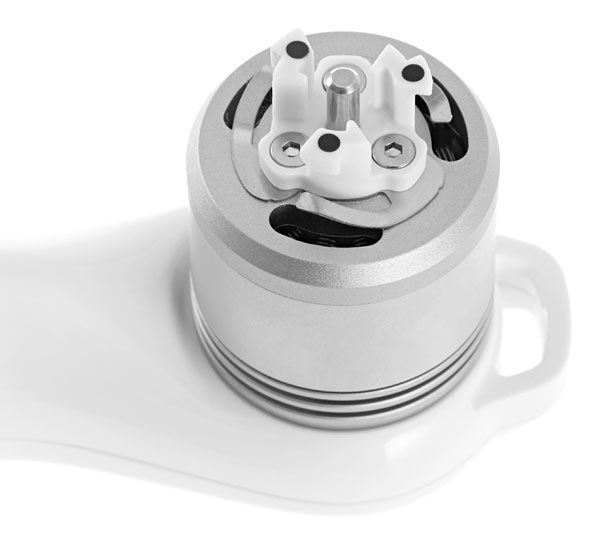
2016's new must-have feature: collision-avoidance comes built-in
Of course, the feature grabbing all the headlines -- for obvious reasons -- is that the DJI Phantom 4 now features obstacle-avoidance capabilities. The company isn't actually the first to offer this capability, though: Back at CES we saw numerous such systems working in quite a variety of different ways. Intel and Yuneec's Typhoon H drone uses regular and infrared cameras plus an infrared laser projector to determine obstacle locations and avoid them. Shenzhen Smart Drone's Mirage quadcopter uses a pair of front-facing ultrasonic sensors beneath its front propellers, akin to what the Phantom 3-series or Parrot's consumer-grade AR.Drone quadcopters have used for altitude detection on the bottom of their quadcopters, and Mola's Tourist 1 uses a similar approach. And then there's the Kingsland K3, which is said to provide for "active obstacle avoidance" courtesy of an addon which we believe likely uses an infrared system.
All of which is to say that while the mainstream media and to a lesser extent DJI themselves are making a big deal of the collision avoidance -- and it's certainly a very useful feature if it works well -- it's perhaps not as unique as has been suggested by some. Given DJI's market-leading status, though, and the greater R&D budget that likely gives them compared to most rivals, we can hopefully expect their system to be among the best out there. DJI says its own system uses an optical sensor, and has a working range of two to 49 feet. And this is a brand-new feature for DJI; none of its prior consumer-grade drones have offered obstacle-avoidance before now.
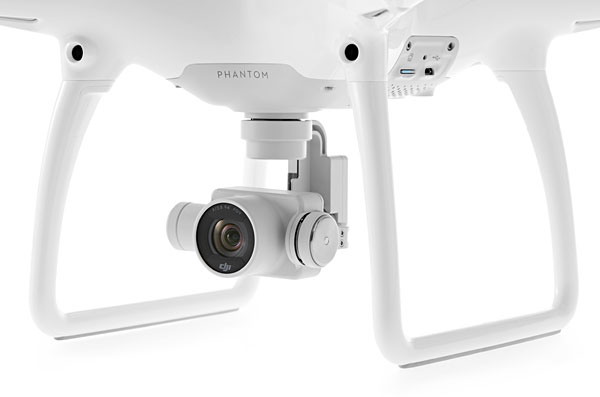
A more stable hover, too
Hovering should be more steady on this new model, at least on the horizontal axis. DJI rates the Phantom 4 as capable of holding its position to within +/-0.3 meters thanks to a refined Vision Positioning System. Compared to the earlier generation, DJI says that the new system provides 300% greater effective hovering altitude, allowing for a near-static hover at heights up to 10 meters. (Beyond that point, so long as the drone remains steady, a bit more motion is unlikely to be noticed anyway.)
Similar camera, but a much better lens
DJI knows that its core customer for the Phantom-series drones is looking for a capable, off-the-shelf aerial photography platform. (Plenty of other companies like Parrot, Walkera and their ilk cater to hobbyists who want to fly a quadcopter just for the fun of it, and at a more affordable pricetag to boot.) In fact, even the company's own product page for the Phantom 4 drone makes that point, describing it in the page header not as a quadcopter or unmanned aerial vehicle (which it is), nor as a drone (as the media loves to refer to them), but as a "flying camera". Still image and video capture, then, are key to the Phantom 4, just as they have been for the last several generations of Phantom quads.
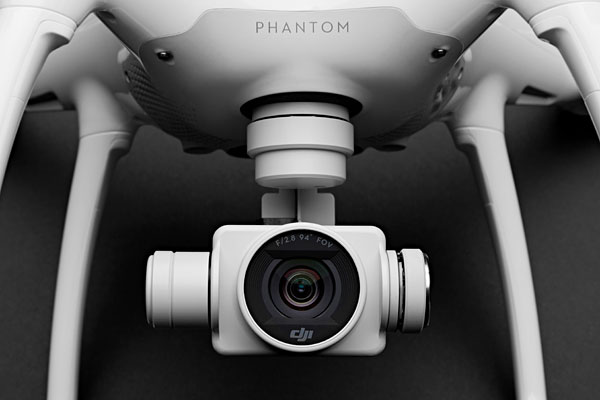
Bearing that in mind, it's perhaps a little disappointing that the Phantom 4 sports the same sensor size as in its nearest predecessor. Still, one has to bear in mind that DJI also sells high-end drones aimed at commercial or government use. These are capable of flying a stabilized, dedicated Micro Four Thirds camera and certain lightweight lenses, or on its largest drones even a large interchangeable-lens DSLR, mirrorless or movie camera. It has to be careful not to encroach too much on those more expensive products, and really, with the existing camera already well-stabilized and capable of 4K ultra-high def video or 12-megapixel stills, there really wasn't much to improve beyond switching to a larger sensor. Sadly, that hasn't happened for this generation.
While the camera's sensor looks to be unchanged, as are its still capture capabilities and most video modes, there is a new 120 frames-per-second video capture mode at Full HD resolution. The lens is also brand-new, suggesting we should see better image quality than before. It now sports an eight-element design, and according to DJI provides both improved sharpness and reduced levels of distortion (36% lower) and chromatic aberration (56% lower). Its fixed focus will render subjects sharply down to as little as one meter. As in the earlier Phantom 3-series, it still has a bright f/2.8 fixed aperture and a fixed 94° field of view. It also retains a removable filter ring so that you can add an ND filter, should you need to, and DNG raw capture is also still possible.
And compared to its immediate predecessor, the DJI Phantom 4 should offer even better stabilization. The U-frame gimbal is said to have been reinforced compared to that in the previous generation, and is now mounted closer to the quadcopter's center of gravity. That helps in more ways than one: Since more of the gimbal lives inside the Phantom 4's body, it also helps to reduce drag and improve stability in gusty conditions.
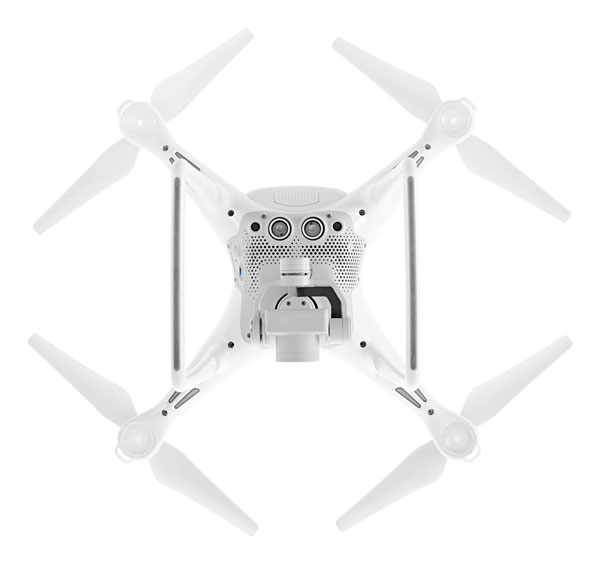
New flight modes for easier operation and subject tracking
We've already mentioned that the DJI Phantom 4 boasts a new Sport flight mode with significantly higher speed. As well as this, there are two other new additions which are rather interesting. The first is called TapFly, and allows the drone to pilot itself to a location you've double-tapped in the live view feed completely automatically. If necessary, it will adjust its altitude to climb over terrain en route, or divert itself to avoid obstacles. The second feature is called ActiveTrack, and uses technology similar to that used for subject tracking in your standalone camera to keep tabs on where the drone's subject is. Touch-and-drag on the live view feed to indicate your primary subject, and the DJI Phantom 4 will attempt to follow it automatically, keeping the camera facing towards it, and again all while avoiding collisions.
One feature we're not certain whether the previous generation included is redundancy in its compass and interial measurement systems, features which help the drone keep track of its position. Whether or not this was true of the Phantom 3-series we're not sure, but the Phantom 4 includes two compasses and IMUs, allowing it to compare readings from both and hopefully determine if inaccurate data is being captured. That should make flyaways and unstable flight even less likely to trouble Phantom 4 pilots than those using less sophisticated drones.
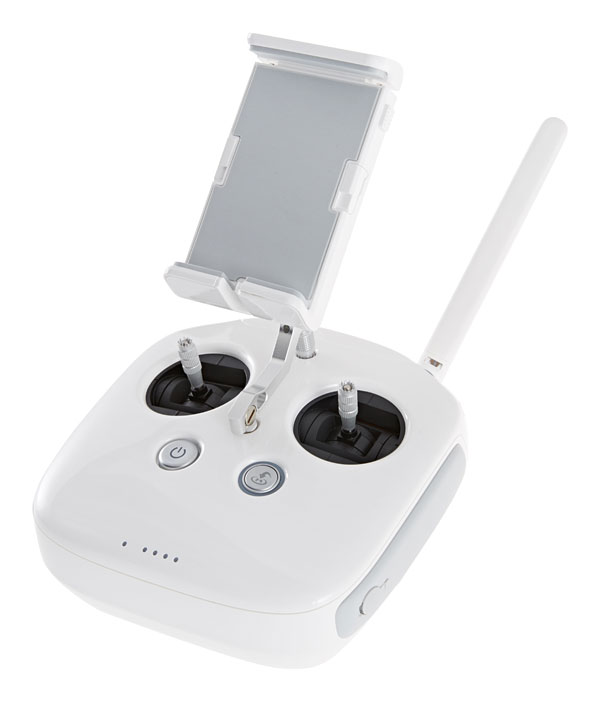
In other respects, features are similar to the Phantom 3 Professional
Most other features of the DJI Phantom 4 look to be pretty similar to the earlier Phantom 3 Professional model. A similar controller is provided, although the Playback button is now replaced by an Intelligent Flight Pause button, and thanks to DJI's Lightbridge Video Downlink, the system has an impressive working range of 3.1 miles while providing a 720p remote live view feed on your smartphone or tablet. User-friendly features like the ability to return home automatically on loss of signal or low battery life are also a key part of the Phantom 4's buy-and-fly design, making it very easy for beginners to get to grips with their new purchase. (And doubly so thanks to the ability to set a maximum altitude and distance from the pilot in Beginner mode.)
Price and availability
Available from March 15th in the US market, the DJI Phantom 4 quadcopter is priced at US$1,400 or thereabouts. By way of comparison, that's around $150 higher than official list pricing for the Phantom 3 Professional, although that model actually sells at a significant discount currently. Compared to the $,1000 street pricing for the Phantom 3 Pro, the Phantom 4 will be selling at about a 40% premium. More details can be found on the DJI website.
